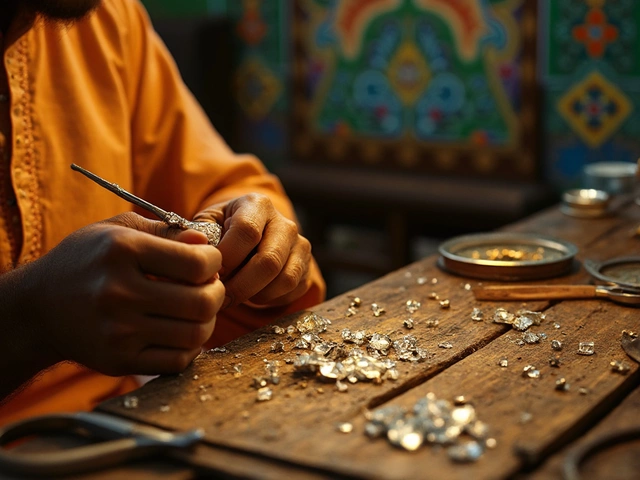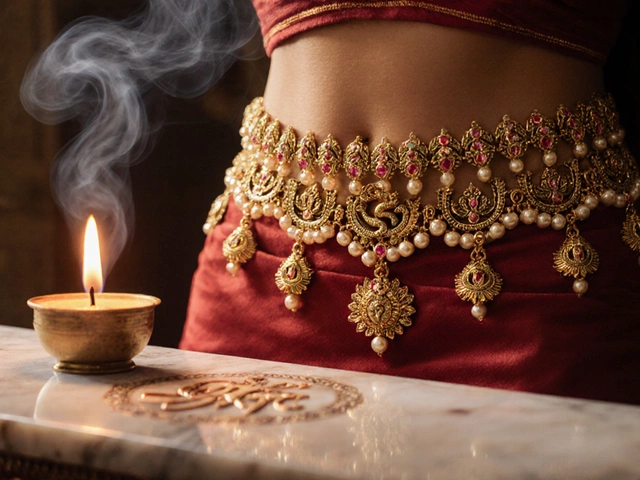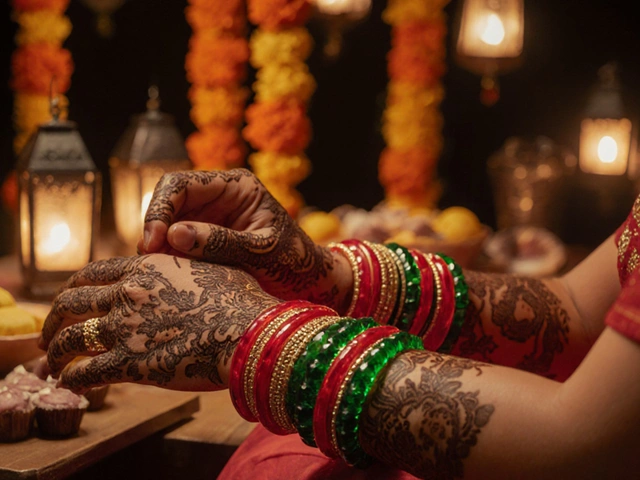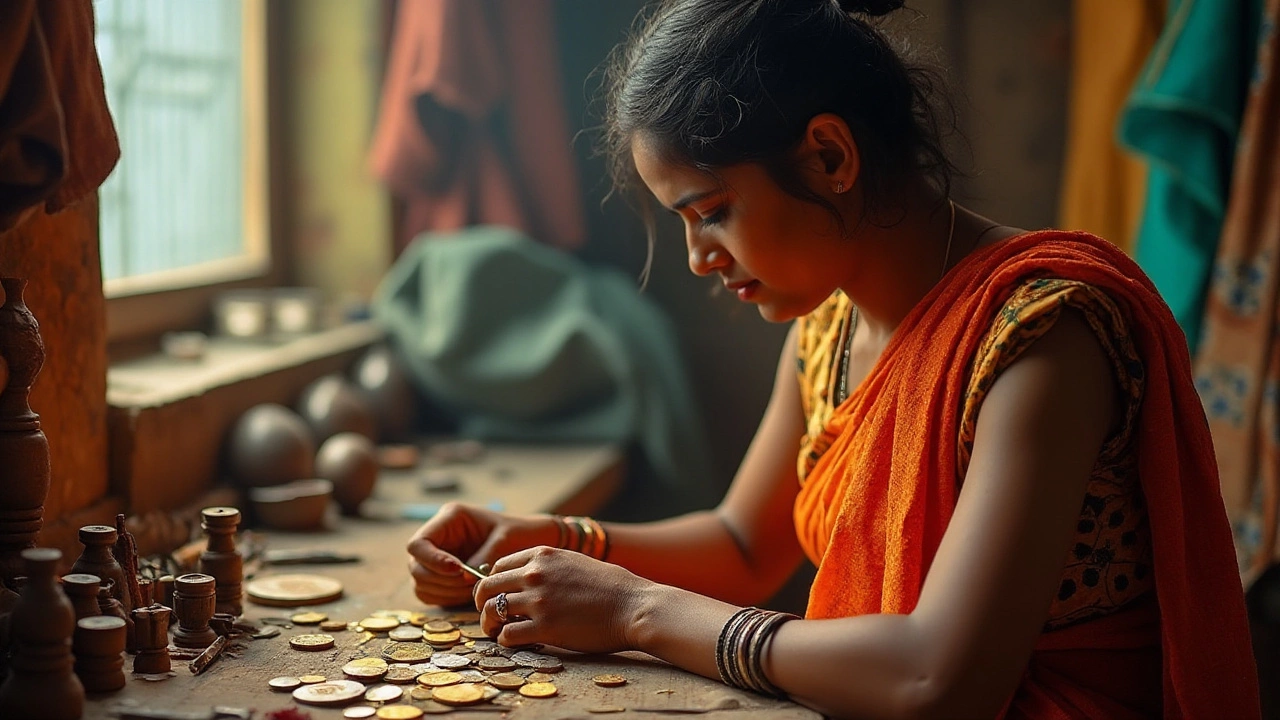
Using money to create jewelry is a unique art form that blends creativity with historical value. However, there's often a cloud of uncertainty regarding its legality. Many are curious about the boundaries when it comes to altering currency for artisanal purposes.
This article seeks to unravel the mystery, offering insights into laws surrounding currency modification, and providing inspiration for those daring enough to embark on such a distinctive venture. Dive into a world where craftsmanship meets currency, and learn how to legally and artistically transform coins and bills into wearable art.
- Understanding the Legality of Money Transformation
- Creative Ideas for Money Jewelry
- Historical Perspective on Money Crafts
- Legal Limits and How to Stay Compliant
- Tips for DIY Money Jewelry Projects
Understanding the Legality of Money Transformation
Strong opinions surround the idea of transforming currency into works of art, leading many to wonder about its legality. In the United States, for instance, U.S. Code Title 18, Section 333 clearly states that mutilating, cutting, or defacing coins is illegal if done with fraudulent intent. This essentially means altering money with the intent to later exchange it for value as currency infringes upon the law. However, creating art, such as jewelry, where the currency serves as the medium rather than the transactional item, is viewed through a different lens. Artists often argue that the transformation is purely creative, devoid of fraudulent intentions, thus allowing some legal leeway. Countries around the world have varying laws, making it crucial for creators to research their local regulations thoroughly.
One intriguing aspect of these laws is how they balance between practicality and creative freedom. The case of national souvenir coins or elongated penny machines, which press coin images for keepsakes, presents an interesting paradox. These examples illustrate how minor alterations are often tolerated and even encouraged in certain contexts. Historical artifacts also provide valuable insights, shedding light on how different eras handled this intersection of legal and artistic expression. In the modern age, it’s essential for hobbyists and professional artists to discern which legal frameworks apply to their specific projects. A fascinating case involving renowned sculptor Gideon Rubin, who used paper bills to create striking visual art, revealed how some artists navigate around legal constraints by aligning their projects with public interest. Similarly, numerous creatives engage in these transformative endeavors, guided by an understanding of legal boundaries and respect for currency’s intrinsic value.
While some artists embrace the challenge of working within the law, others may choose to quietly operate until challenged. To navigate this complex legal terrain, it’s beneficial for creators to seek legal advice, especially if planning to sell their creations. Discussions with legal experts can provide clearer interpretations of existing laws and highlight any potential legislative changes. Compliance with legal standards doesn’t necessarily stifle creativity; it can inspire innovative approaches to using unexpected materials in sustainable and aware ways. Usually, laws reflect the spirit of balancing innovation with ethical conduct, promoting respect for currency as a tool of economy and a canvas for creativity. When venturing into this artistic realm, careful planning and open discussions with authorities or legal professionals help in fostering a robust practice.
"Art is the most beautiful weave of legality and creativity, each respecting the limitations and vastness of the other," remarked Elena Franz, an art law specialist during a recent seminar on artistic freedoms and legalities.
Creative Ideas for Money Jewelry
Creating jewelry from money is not just about bending pennies or cutting up bills; it's an adventure into the realm of art and symbolism. The fusion of currency with the world of fashion beckons the imaginative mind to explore limitless possibilities. Imagine transforming an everyday quarter into a charm bracelet centerpiece, or reshaping a harmlessly tarnished penny into a vintage-style ring. Such creations aren't just aesthetically pleasing; they carry stories, history, and perhaps even a touch of subversive flair.
A pioneering idea could be the crafting of earrings from vintage coins. Coins from different eras and countries bring a plethora of design elements, each telling a part of the world's colorful history. You can drill small holes into coins that are no longer in circulation and dangle them as earrings, perhaps pairing a Japanese yen with a French franc. The juxtaposition of different shapes and metals brings out an intriguing mix, evoking a sense of wanderlust and a deep appreciation for the world's financial artistry.
Currency Notes as Jewelry
Another captivating idea involves using paper currency. Paper bills may be folded into intricate designs to create pendants or even entire necklaces. When laminated, these paper pieces become surprisingly durable and can be showcased as charms. A stunning innovation was highlighted by an art exhibition at Atlas Sztuki in Poland, where artists used laminated bills to create entire necklaces and brooches that captivated audiences with their complexity and uniqueness. It's a testament to the potential that paper money has beyond its monetary value.
"In artistic transformations, currency serves as a bridge between consumerism and art — a literal translation of value," says cultural critic Elina Gertsman. These creations don't just look good; they spark dialogue about value, consumer culture, and the role of currency in modern society.
Combining Elements: Coins and Bills
For those looking to push boundaries further, combining coins with paper money in jewelry design is an untapped frontier. Why not construct a brooch that features a folded bill flower centerpiece, encircled by a halo of coin petals? The marriage of these two materials—one solid, the other delicate—can lead to designs that astonish and captivate with their contrast in texture and form. This method encourages the juxtaposition between robust metals and the fragility of paper, creating a dynamic dialogue between elements.
To embark on your money jewelry crafting journey, you'll need a few tools beyond basic jewelry-making kits. Pliers, small handheld drills, and polishing kits can help refine your pieces. Remember, when working with money, especially coins, to be aware of their legality and crafting limitations, as repurposing current currency may not always be permissible. Nevertheless, when done correctly and legally, money jewelry can serve as a stunning and meaningful statement piece.

Historical Perspective on Money Crafts
The fascination with transforming money into ornamental pieces is not a modern phenomenon, but rather one rooted deeply in history. Long before paper currency was standardized, people found ways to incorporate coins into their personal adornments. This practice was not only about making a fashion statement but also served as a display of wealth and status in various ancient cultures. Take, for instance, the Roman Empire, where soldiers often wore coins embedded in their armor and helmets as a mark of valor and prosperity. These emblems of combat and fortune were passed down through generations, aligning monetary wealth with the family legacy.
Across continents, the ancient Chinese civilizations had their own unique take on this practice. Coins with square holes were often strung together to form elaborate necklaces or embellishments on clothing, much like the way people use gold today. These coins were also believed to hold protective powers, doubling as amulets against evil. The intrinsic value of money made it both a coveted possession and a valuable material for crafting personal and decorative objects. Interestingly, there remains a tradition in some cultures to commemorate major life events, such as weddings and births, by fashioning coins into tangible keepsakes.
In Europe, the transformation of coins into jewelry gained a significant cultural foothold during the medieval era. This was an age when craftsmen would skillfully engrave coins, turning them into medallions and tokens that carried both cultural significance and emblematic wealth. A notable example can be found in the Viking Age, where coins captured from raids were reshaped into brooches and rings. This incorporation of plundered riches into daily life underscored a practical and symbolic victory. The sheer diversity of styles and techniques across histories and geographies is a testament to the enduring appeal of jewelry making from currency.
"Money often costs too much." – Ralph Waldo Emerson
As the centuries turned, the Renaissance period brought about a shift in the aesthetic ideals. Jewelers of the time began incorporating more intricate designs, with coins often set into pieces that combined precious gemstones and metals. These creations were not merely ornamental; they carried with them stories of trade, conquest, and cultural exchange. One can observe a parallel in the colonial Americas, where settlers used coins, sometimes melted down, to fashion their first domestic currency after independence. This historical context adds layers of interest to the practice of turning currency into wearable art today.
The evolution of money crafts continued well into the 20th century. During the Great Depression, many found themselves economically challenged and saw coin jewelry as an accessible and affordable artistic outlet. It wasn't uncommon to see artists and craftsmen sharing skills on how to transform the limited resources available to them into something aesthetically pleasing and valuable. Fast forward to present times, and the art of turning currency into jewelry continues to thrive, inspired by the rich tradition and historical significance that it carries from past centuries.
Legal Limits and How to Stay Compliant
Engaging in the creation of jewelry making using money demands a keen understanding of the legal boundaries. Often, people wonder about the legality of altering currency to make stunning pieces. This section endeavors to demystify the laws governing such practices, with particular emphasis on U.S. constraints, while also touching on international perspectives. It's critical to be aware that most laws regarding currency modification exist to prevent counterfeiting and to maintain public trust in currency value.
In the United States, for instance, defacing or mutilating coins with the intent to defraud is illegal, as outlined in Title 18, Section 331 of the U.S. Code. However, using coins creatively for non-fraudulent purposes generally falls outside these prohibitions. This means transforming coins into pieces of art or jewelry, as long as it's not for deceptive purposes, can be permissible. When it comes to paper money, the situation is slightly different. Under U.S. law, it's illegal to deface banknotes if it makes them unsuitable for reissue, which implies that significant alteration for artistic endeavors is a gray area. As a best practice, consider using currencies that are out of circulation or collectible editions that won’t affect the money supply.
A similar principle applies in many countries. Countries like Canada and the UK have strict rules about mutilating banknotes, largely to maintain their usability and value. However, when it comes to coins, many artists worldwide have found acceptance in using discontinued or damaged coins for their art. This not only adheres to legal guidelines but also adds an element of historical intrigue to their creations.
"The fine balance of creativity and compliance is crucial for artisans," says Andrea Simmons, a renowned jewelry artist who often incorporates coins into her designs. Presenting old coins in new forms transforms their narrative, adds layers of history, and invites new conversations and context.
It's important for enthusiasts of this craft to familiarize themselves with local guidelines and historical practices. A simple way to ensure compliance is to begin with a thorough research of applicable laws in your area. Consulting legal experts or reaching out to local government offices can also provide some reassurance. Engaging in online forums and communities for DIY jewelry artisans can offer additional insights and advice from others who have navigated similar legal landscapes.
Lastly, transparency in your creation process can act as a safeguard. Clearly demonstrating the transformation of currency into art, and highlighting its artistic purpose, helps avoid misconceptions about intent. Remember, the goal is to celebrate the craftsmanship inherent in merging monetary history with creative innovation, not to create currency substitutes. By respecting these legal boundaries, artisans can continue indulging in money crafts, exploring and expanding their artistic horizons without stepping outside legal limits.
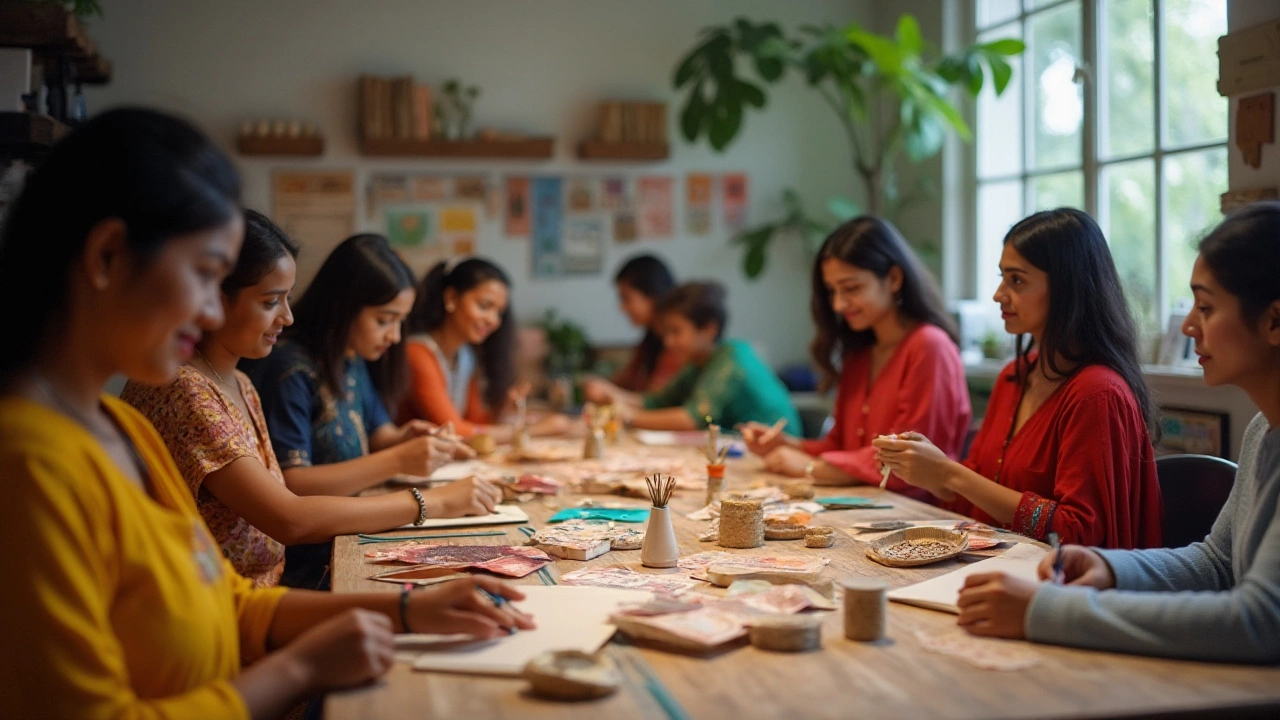
Tips for DIY Money Jewelry Projects
Crafting jewelry from currency might seem like an intimidating task initially, but with a few tips and a bit of patience, you can create stunning pieces that not only hold value but also tell a story. The first step involves selecting the right type of money. Coins are often more durable and easier to work with than paper bills for beginners. Choose currency that isn't considered collectible or valuable, such as foreign coins or older decimated bills with no legal tender status. Keep the legality in mind as some laws prohibit the alteration of current currency that is still in circulation. Researching this aspect will keep you from unintentionally crossing any legal lines.
Once you've chosen your medium, it's time to gather tools. A basic set-up might include jewelry pliers, a metal punch, and a small hammer. For more sophisticated designs, consider investing in a Dremel tool for intricate carvings and polishing. If working with paper money, make use of decoupage techniques to strengthen the bill and preserve its appearance. Encapsulating a bill between glass or in resin can offer durability while providing an attractive aesthetic. Always wear safety goggles and work gloves where necessary to avoid injuries and mishaps during the crafting process.
Jewelry making from money is not just about the craft technique; it’s also about the presentation and design of your piece. Consider layering different types of coins in a necklace or using half coins to create a pair of earrings. Using a contrasting material such as wood or glass can make your money jewelry stand out more. Remember that each piece can be a conversation starter, especially if you share the story or significance behind the currency you used. As aspiring artists, we must ensure that the creative ideas for money jewelry we pursue do justice to both our craft and the historical value of the currency.
"The beauty of art is that it reflects culture and society. Jewelry made from currency replicates that very essence," says Ian Hamilton, a renowned jewelry designer.
We must recognize the occasional need for troubleshooting during your crafting journey. Coins might not always drill perfectly, resulting in irregular holes. In such cases, consider using round files to smooth out edges carefully. Paper currency, once hardened with adhesive or resin, might not fold the way you wish. Testing small samples before committing to larger pieces can save resources and effort. Also, the arrangement of elements significantly impacts the look of your piece. Experiment with different configurations before finalizing your design. With practice, your understanding of these nuances will sharpen, paving the way to exceptional artistry.
Lastly, the presentation of your finished products is just as vital as their creation. Think about how you will display or gift your money crafts. Simple touches, like custom jewelry boxes or velvet pouches, can enhance the perceived value and protect your work. Sharing your work on social media platforms or in creative forums can offer encouragement and feedback, connecting you with others passionate about this unconventional art form. Embrace the learning process, express your individuality, and remember that each step forward enriches your craftsmanship.

